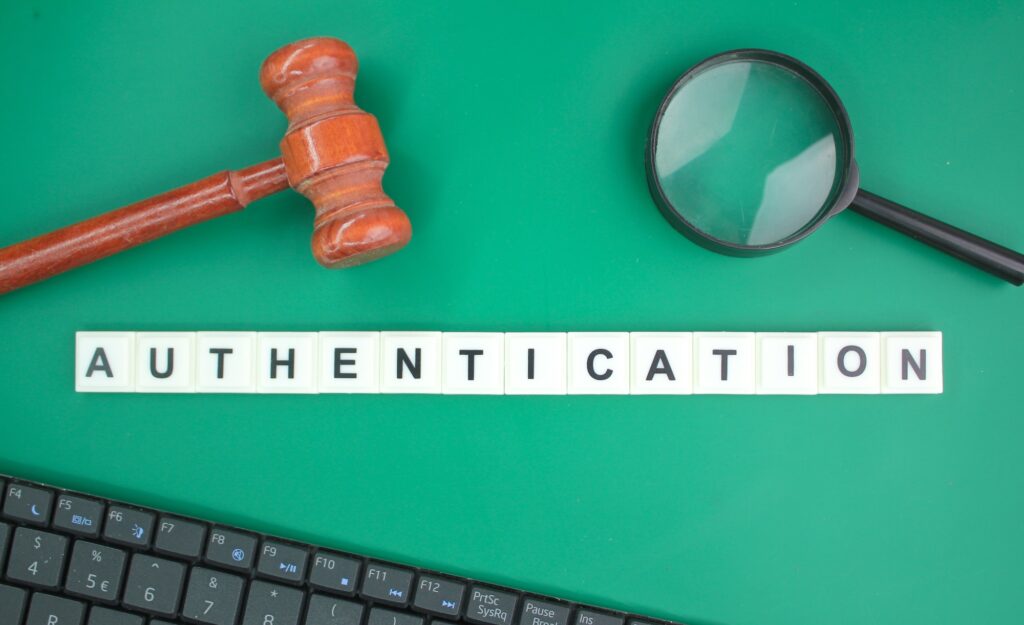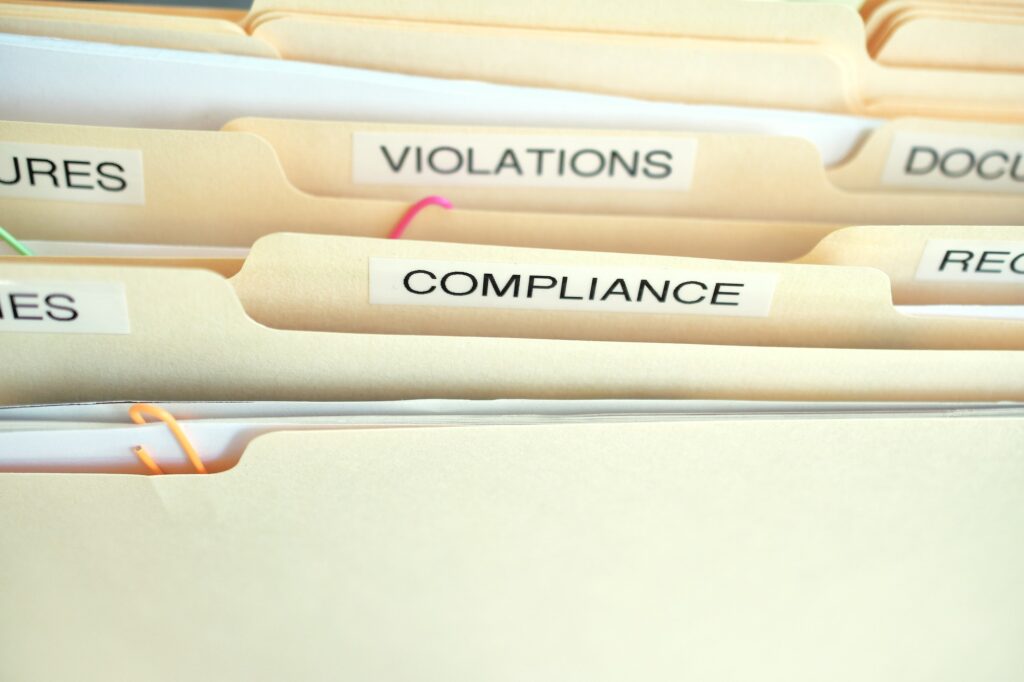In today’s digital landscape, data privacy and compliance have become increasingly important for businesses of all sizes. With the growing complexity of regulations, such as the General Data Protection Regulation (GDPR) and the California Consumer Privacy Act (CCPA), it’s crucial for organizations to ensure they handle user data responsibly and securely. As one of the most widely used analytics tools, Google Analytics provides a wealth of features and settings to help you protect user data and maintain compliance.
This article will serve as a comprehensive guide to Google Analytics privacy and compliance, covering topics such as data collection and storage, IP anonymization, cookie settings, user permissions, opt-out solutions, and adhering to GDPR and CCPA requirements. By implementing the best practices outlined in this guide, you can ensure that your use of Google Analytics aligns with data privacy regulations and builds trust with your users. So, let’s dive in and explore how to protect your data while making the most of Google Analytics’ powerful features.
Table of Contents
ToggleUnderstanding Data Collection and Storage in Google Analytics

Before diving into the various privacy and compliance settings in Google Analytics, it’s essential to have a basic understanding of how data is collected and stored within the platform. This will provide a solid foundation for implementing best practices to protect user privacy and ensure compliance. We ensure that all of our seo clients in Charleston, SC are following proper privacy and compliance regulation.
A. How Google Analytics Collects Data
- Google Analytics uses JavaScript code (the Global Site Tag, or gtag.js) embedded in your website’s pages to collect user data.
- This code sends information about user interactions and website usage to Google Analytics servers via HTTP requests.
- Google Analytics processes the collected data and generates reports, which can be viewed and analyzed within the platform.
B. Types of Data Stored in Google Analytics
- User data: Information about individual users, such as device type, browser, location, and engagement metrics.
- Session data: Details about each user’s visit, including the duration, pages viewed, and source of traffic.
- Event data: Specific user interactions, like clicks, form submissions, and downloads, that you can track and analyze.
C. Data Retention Settings and Options
- Google Analytics allows you to configure data retention settings, which determine how long user and event data is stored.
- You can choose from various retention periods, such as 14 months, 26 months, 38 months, or 50 months, or choose to retain data indefinitely.
- Regularly review and update your data retention settings to balance the need for historical data analysis with privacy and compliance requirements.
By understanding the basics of data collection and storage in Google Analytics, you can make informed decisions about privacy and compliance settings. In the following sections, we’ll explore specific features and best practices to help you protect user data and maintain compliance with relevant regulations.
Anonymizing IP Addresses

IP addresses are sensitive pieces of information that can potentially be used to identify individual users. To protect user privacy and comply with data protection regulations, it’s essential to anonymize IP addresses collected by Google Analytics.
A. Importance of Anonymizing IP Addresses for User Privacy
- Anonymizing IP addresses reduces the risk of exposing personally identifiable information (PII) and helps maintain user trust.
- Anonymization helps ensure compliance with data protection regulations like GDPR, which require that organizations take appropriate measures to protect PII.
B. How to Enable IP Anonymization in Google Analytics
- To anonymize IP addresses in Google Analytics, you’ll need to modify the tracking code on your website.
- Locate the Global Site Tag (gtag.js) in your website’s source code.
- Add the following line to your tracking code, right after the ‘config’ line:
gtag('set', 'anonymize_ip', true);
- Save the changes and verify that the modified tracking code has been implemented on all pages of your website.
C. How IP Anonymization Works
- When you enable IP anonymization, Google Analytics will remove the last octet of the user’s IP address before storing it.
- This process ensures that the stored IP address can no longer be used to identify an individual user, while still allowing Google Analytics to collect accurate location data for reporting purposes.
By anonymizing IP addresses in Google Analytics, you’ll take an important step toward protecting user privacy and ensuring compliance with data protection regulations. In the next sections, we’ll explore additional privacy features and best practices, such as configuring cookie settings and managing user permissions.
Configuring Cookie Settings

Cookies play a crucial role in how Google Analytics collects and processes user data. By customizing cookie settings, you can enhance user privacy and ensure compliance with data protection regulations.
A. Overview of Cookies Used by Google Analytics
- Google Analytics primarily uses first-party cookies to store information about user interactions with your website.
- Common cookies used by Google Analytics include:
- _ga: Used to distinguish users, with a default expiration of 2 years.
- _gid: Used to distinguish users, with a default expiration of 24 hours.
- _gat: Used to throttle request rate, with a default expiration of 1 minute.
B. Customizing Cookie Settings for User Privacy and Compliance
Adjust the cookie expiration times:
- You can modify the expiration times of the _ga and _gid cookies to better align with data retention policies or user consent preferences.
- Update the tracking code by adding the following lines after the ‘config’ line: “
gtag('config', 'GA_MEASUREMENT_ID', {
'cookie_expires': COOKIE_EXPIRATION_TIME_IN_SECONDS
});
"
Disable cookies entirely:
- In some cases, you may need to disable cookies altogether, for example, when users have not provided consent for cookie usage.
- To disable cookies, update the tracking code by adding the following line after the ‘config’ line: “
gtag('config', 'GA_MEASUREMENT_ID', {
'storage': 'none'
});
"
Use a cookie banner or consent management platform:
- Implementing a cookie banner or consent management platform on your website can help ensure that users are informed about cookie usage and can provide or withdraw consent as needed.
By configuring cookie settings in Google Analytics, you can better protect user privacy and comply with data protection regulations. In the following sections, we’ll explore more advanced privacy and compliance features, such as managing user permissions and implementing opt-out solutions.
Managing User Permissions and Access Controls

Effectively managing user permissions and access controls in Google Analytics is crucial for protecting sensitive data and maintaining compliance with data protection regulations. By implementing a robust access control strategy, you can minimize the risk of unauthorized access or data breaches.
A. Levels of User Access in Google Analytics
- Google Analytics provides four levels of user access:
- Read & Analyze: Users can view reports and perform basic analysis.
- Collaborate: Users can create and edit shared assets, such as dashboards and annotations, in addition to Read & Analyze permissions.
- Edit: Users can modify account, property, and view settings, create goals, and manage filters, along with Collaborate and Read & Analyze permissions.
- Manage Users: Users can add or remove users, assign permissions, and manage user groups.
B. Best Practices for Managing User Permissions
- Follow the principle of least privilege:
- Grant users the minimum level of access required for their role, limiting their ability to view or modify sensitive data or settings.
- Regularly review and update user permissions:
- Conduct periodic audits to ensure that user permissions are up to date and reflect current roles and responsibilities.
- Remove access for users who no longer require it, such as former employees or contractors.
- Use user groups to simplify permission management:
- Create user groups based on roles or responsibilities and assign permissions at the group level, making it easier to manage access for multiple users.
- Limit the number of users with ‘Manage Users’ permission:
- Restrict the number of users who can manage user access to minimize the risk of unauthorized access or permission changes.
By implementing these best practices for managing user permissions and access controls in Google Analytics, you can effectively protect sensitive data and maintain compliance with data protection regulations. In the next sections, we’ll explore more privacy features and best practices, such as providing opt-out solutions and ensuring compliance with GDPR and CCPA requirements
Implementing Opt-Out Solutions for Users
Providing users with the option to opt out of Google Analytics tracking is an important step toward respecting user privacy and complying with data protection regulations. Implementing opt-out solutions allows users to exercise control over their data and builds trust with your audience.
A. Google Analytics Opt-Out Browser Add-on
- Google provides an official opt-out browser add-on that users can install to prevent their data from being collected and used by Google Analytics.
- To promote transparency and user choice, consider including a link to the opt-out add-on in your privacy policy or cookie consent banner.
B. Custom Opt-Out Solution
- You can also create a custom opt-out solution by adding a JavaScript function to your website, allowing users to disable Google Analytics tracking with a click.
- To create a custom opt-out solution, add the following function to your website’s source code: “
function gaOptout() {
document.cookie = '_ga_opt_out=1; expires=Thu, 31 Dec 2099 23:59:59 UTC; path=/';
alert('Google Analytics tracking has been disabled for this website.');
}
"
- Then, add an HTML element, such as a button or link, that users can click to disable tracking: – html
<button onclick="gaOptout()">Disable Google Analytics Tracking</button>
- Finally, update your Google Analytics tracking code to check for the opt-out cookie and disable tracking if it is present: – javascript
if (document.cookie.indexOf('_ga_opt_out=1') === -1) {
gtag('config', 'GA_MEASUREMENT_ID');
} else {
gtag('config', 'GA_MEASUREMENT_ID', { 'send_page_view': false });
}
By providing opt-out solutions for Google Analytics tracking, you can demonstrate your commitment to user privacy and ensure compliance with data protection regulations. In the following sections, we’ll explore more advanced privacy and compliance features, such as adhering to GDPR and CCPA requirements and integrating Google Analytics with other tools to enhance data protection.
Google Analytics and GDPR Compliance

The General Data Protection Regulation (GDPR) is a comprehensive set of data protection rules that apply to organizations operating within the European Union (EU) or processing data of EU citizens. Ensuring that your use of Google Analytics is GDPR compliant is essential for protecting user privacy and avoiding potential fines or penalties.
A. Key GDPR Requirements for Google Analytics Users
- Obtain user consent: Obtain explicit consent from users before collecting, processing, or storing their personal data. This includes implementing a cookie consent banner that informs users about the purpose of data collection and processing.
- Anonymize IP addresses: As discussed earlier, anonymize IP addresses to protect user privacy and minimize the amount of personally identifiable information (PII) collected.
- Limit data retention: Adjust your Google Analytics data retention settings to align with your organization’s data retention policies, ensuring that you only store user data for as long as necessary.
- Provide data access, rectification, and deletion rights: Ensure that you can comply with user requests to access, correct, or delete their personal data, as required by GDPR.
B. Leveraging Google Analytics’ GDPR Compliance Features
- Google Analytics offers a Data Processing Amendment (DPA) that outlines its commitment to GDPR compliance and helps define the relationship between Google and your organization as data processor and data controller, respectively.
- Activate the User Deletion API to delete user data from Google Analytics upon request, ensuring that you can comply with GDPR’s “right to be forgotten.”
- Use the Data Export API to provide users with a copy of their data, ensuring compliance with GDPR’s data access and portability rights.
By implementing the necessary measures to ensure GDPR compliance when using Google Analytics, you can protect user privacy and minimize the risk of non-compliance penalties. In the next sections, we’ll explore additional privacy and compliance topics, such as CCPA compliance and integrating Google Analytics with other tools to enhance data protection.
Google Analytics and CCPA Compliance
The California Consumer Privacy Act (CCPA) is a data privacy law that grants California residents specific rights over their personal information. Ensuring your use of Google Analytics is compliant with CCPA is important for protecting user privacy and avoiding potential penalties.
A. Key CCPA Requirements for Google Analytics Users
- Inform users: Clearly disclose the categories of personal information collected, the purpose of data collection, and any third parties with whom the information is shared. This information should be included in your privacy policy.
- Provide an opt-out option: Offer a clear and easy-to-find “Do Not Sell My Personal Information” link on your website, enabling users to opt out of the sale of their personal information.
- Honor user requests: Respond to user requests for data access, deletion, and opt-out, as required by CCPA.
B. Adapting Google Analytics for CCPA Compliance
- Review and update your privacy policy: Ensure that your privacy policy provides the necessary information about Google Analytics and how you use it to collect, process, and share user data.
- Disable data sharing settings: To prevent Google from using your analytics data for other purposes, such as benchmarking, disable the data sharing settings in your Google Analytics account.
- Implement a “Do Not Sell My Personal Information” link: As mentioned earlier, create a custom opt-out solution for Google Analytics or use Google’s opt-out browser add-on to allow users to opt out of data collection.
- Use Google’s Consent Mode: Implement Consent Mode, a Google Analytics feature that helps you manage user consent for analytics and advertising cookies.
By taking the necessary steps to ensure CCPA compliance when using Google Analytics, you can protect user privacy and minimize the risk of non-compliance penalties. In the final sections, we’ll explore how to integrate Google Analytics with other tools to enhance data protection and provide an overview of data visualization and analysis tools for Google Analytics.
Conducting Regular Privacy and Compliance Audits
Regular privacy and compliance audits are essential for ensuring that your use of Google Analytics remains in line with data protection regulations and best practices. By conducting periodic audits, you can identify potential risks, make necessary adjustments, and maintain a robust data protection strategy.
A. Key Elements of a Google Analytics Privacy and Compliance Audit
- Review user permissions and access controls: Verify that user permissions are up to date, follow the principle of least privilege, and ensure that only authorized users have access to sensitive data.
- Check data collection and processing practices: Review your data collection, storage, and processing practices to ensure that they comply with GDPR, CCPA, or other applicable data protection regulations.
- Assess cookie consent and opt-out options: Ensure that your cookie consent banner and opt-out solutions are functioning correctly and comply with regulatory requirements.
- Examine data retention settings: Confirm that your data retention settings align with your organization’s data retention policies and minimize the storage of unnecessary user data.
- Evaluate third-party integrations: Review the data privacy and security practices of third-party tools and services that are integrated with your Google Analytics account.
B. Best Practices for Conducting Privacy and Compliance Audits
- Establish a regular audit schedule: Depending on the size and complexity of your organization, consider conducting privacy and compliance audits on a quarterly or biannual basis.
- Document your findings: Maintain a record of your audit findings, including any identified risks, recommended actions, and completed improvements.
- Assign responsibility for audits and follow-up actions: Designate a team or individual within your organization to be responsible for conducting audits, implementing improvements, and ensuring ongoing compliance.
- Stay informed about changes to data protection regulations: Keep up to date with changes to data protection laws and guidelines, adjusting your Google Analytics privacy and compliance practices as necessary.
By conducting regular privacy and compliance audits for your Google Analytics account, you can maintain a strong data protection strategy and reduce the risk of non-compliance penalties. In the final section, we’ll summarize the key points from this guide and emphasize the importance of protecting your data in Google Analytics.
Final Thoughts
Protecting user privacy and ensuring compliance with data protection regulations are essential aspects of using Google Analytics effectively and responsibly. This guide has provided insights and actionable steps to help you safeguard your data while making the most of the valuable insights that Google Analytics offers.
Key takeaways from this guide include:
- Understanding how Google Analytics collects and stores data, and implementing measures to anonymize IP addresses and configure cookie settings.
- Managing user permissions and access controls to maintain data security and prevent unauthorized access.
- Offering opt-out solutions to empower users with control over their data and demonstrating your commitment to user privacy.
- Ensuring compliance with GDPR and CCPA by implementing necessary measures, such as obtaining user consent, honoring user requests, and adapting your data collection and processing practices.
- Conducting regular privacy and compliance audits to identify potential risks, make necessary adjustments, and maintain a robust data protection strategy.
By implementing these best practices and staying up to date with changes to data protection regulations, you can create a secure and compliant Google Analytics environment that respects user privacy while providing valuable insights to improve your website and business performance.






